Munich
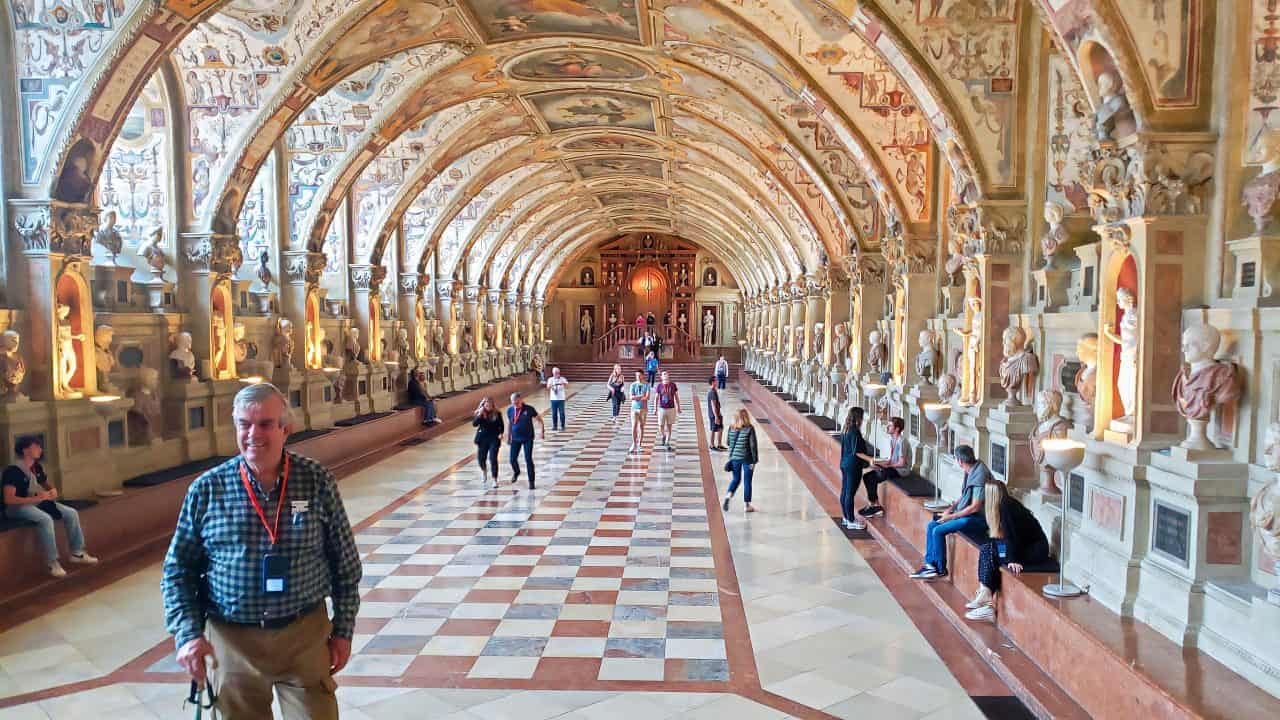
Mike and I really like both Munich and Bavaria. We have been here before, on vacation, and I have been here on business. Bavaria, with its colourful houses and lots of windowsill flowers gives off an atmosphere of happiness and friendliness and of course you can’t forget Bavaria’s many castles.
Bavaria is the largest state, by both land and people, in Germany. I can’t tell you about the historic places we have visited without telling you a little bit about the House of Wittelsbach who ruled Bavaria from the 12th century until the German Revolution when the monarchy was abolished in 1918. The family continues to have a large involvement in the politics and business of Bavaria.
One very exhausting day, Mike and I toured what is known as the Munich Residenz. In 1395 the Wittelsbachs built a small, moated castle. 500 years later this seat of government and the residence of the Wittelsbach dynasty had grown extensively. Today the Residenz indoor floor space covers 660,000 square feet or 60,450 square meters (WOW!!!) built around 10 separate courtyards. It has 130 rooms including a church, theatre, and riding stables. By the end of our tour Mike’s and my feet felt like they had walked the entire complex, possibly twice. It was great but we were dead tired.
In much of the Residenz a technique called scagliola was used to make stucco look like polished marble. It was outstanding. When Maximilian 1 was in power he reserved the “rights” to scagliola for himself or his palaces. The product couldn’t be sold or manufactured for anyone else.
The picture at the top is Mike in a room called the Antiquarium. It is 217 feet (66 m) long and is absolutely magnificent. In the past, in addition to gold and silver and jewels the chapel had contained much more valuable relics. One gold carving of a cross used to hold four slivers from the original cross of Jesus. We have seen relics or portions of fingers and organs of various Saints in some cathedrals. I cannot imagine taking a person to pieces bit by bit or even the cross to pieces bit by bit to create relics to give the churches extremely high standing or recognition.
It was interesting to hear that the wall tapestries were actually kept stored in a fireproof vault. They were brought out and hung in bedrooms and other rooms based on the rank of the visitor. As you would expect, the Residenz was full of rooms filled with what Mike called “ornate opulence”.
As part of the Residenz, was the lovely, small, Cuvilliés Theatre built in the 1750s. As was much of Munich, it was severely damaged in bombing raids by the Allied forces in WWII. A lot of the unique portions of the interior of the theatre had been removed earlier and stored in a safe place. It was rebuilt after the war.
At one point I felt like I was visiting IKEA. I saw the occasional sign for “short route”, silly me, I felt like it would be wrong to take it. I was dead but I had paid to see the Residenz. At one point I overheard some people asking security about how to exit quickly. After listening to the security guard they then said that they had already been that way and ended up back where we were. It really did make me think of IKEA.
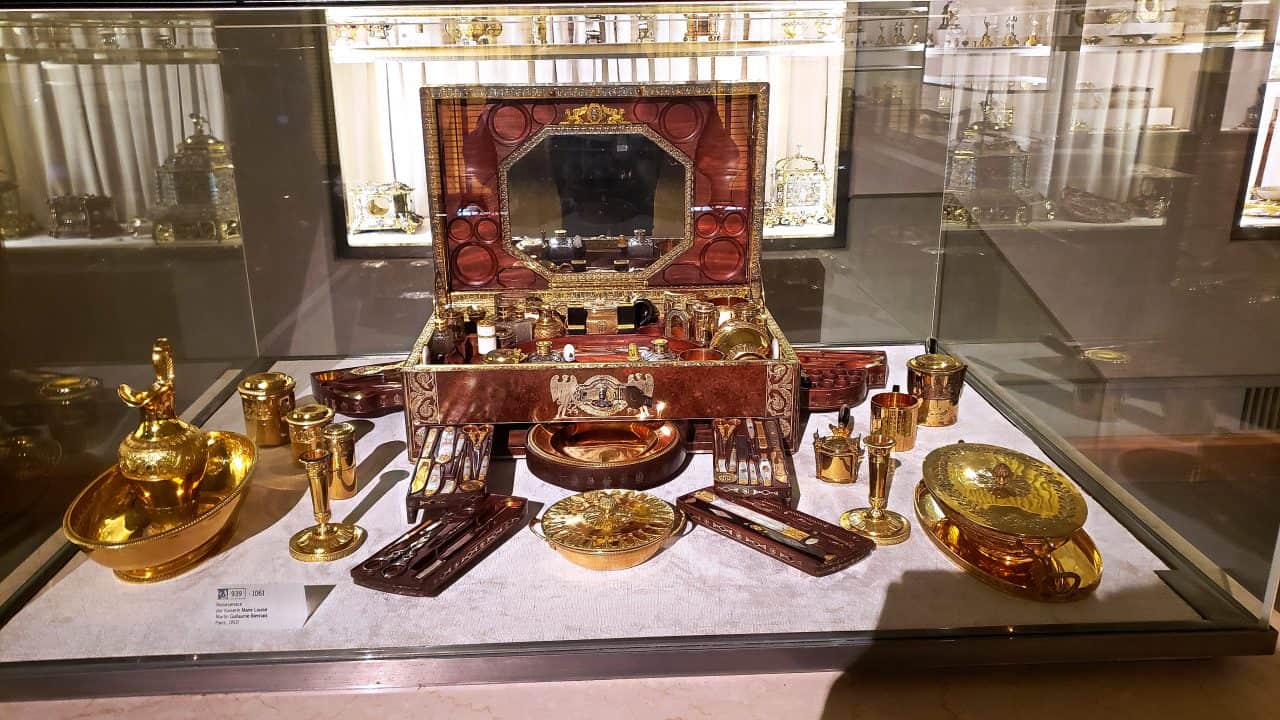
One area that we toured was called the Treasury. If I tell you that there were 10 rooms just for the items on display, does that give you some idea of the size of the Treasury. I could have kept pictures of the phenomenal jewels and crowns on display, but the picture above is the one that intrigued me the most. This is a travel service gifted by Napoleon Bonaparte to his second wife. The case is only 22 inches (56 cm) wide but somehow it stores an amazing number of items. It has various secret compartments. It contains over 120 items including a dinner service for two, a toilet set, writing and sewing materials, a ruler, screwdrivers and even dental instruments. Of course, the finishes on everything were exquisite but I couldn’t get over how everything on display fit in that one case. It made me think of when you try and repackage items and wonder how they ever fit in the first place.
There was a statue of St. George killing the dragon. There were also some beautiful medals for the Order of St. George. To belong to the Order your family had to go back 15 generations of nobility on BOTH the paternal and maternal side. That helps ensure you marry within your class.
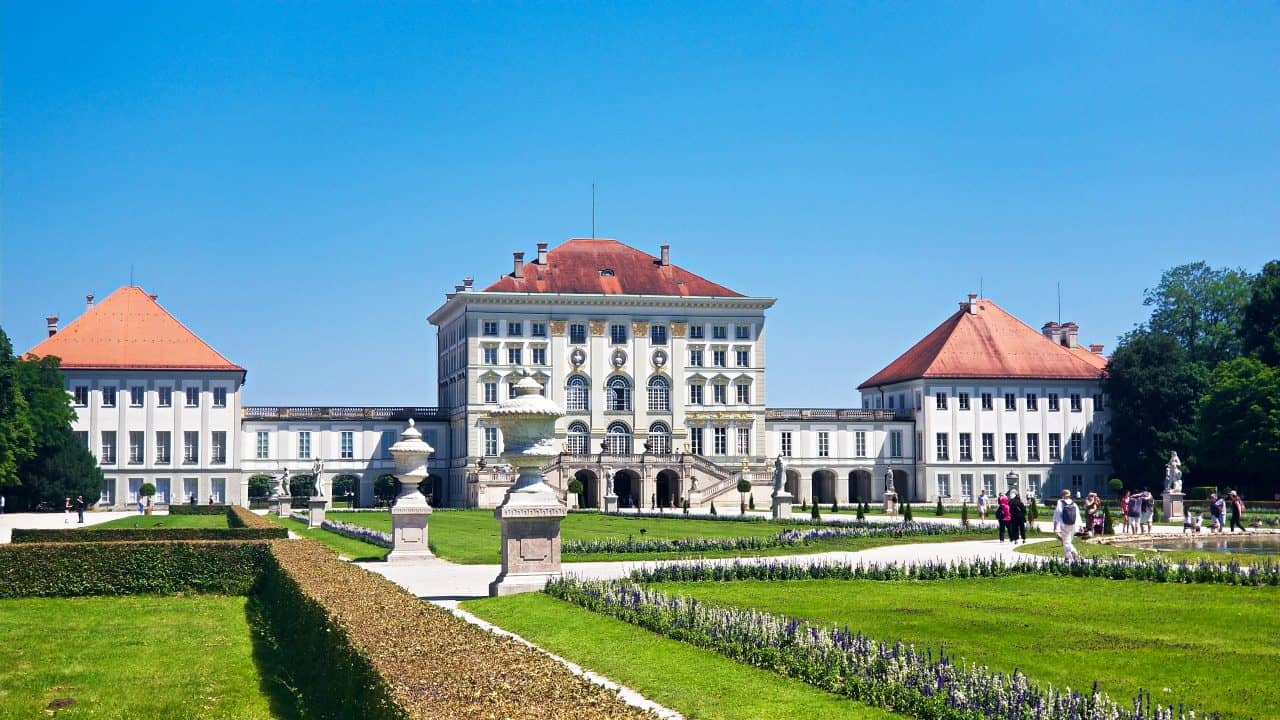
A few days later Mike and I had a look at the Nymphenburg Palace from the outside only. The Nymphenburg Palace is only about 6 kilometers (3.7 miles) from the Munich Residenz. After touring the Munich Residenz we didn’t need another inside tour. We only wandered around a few of the 500 acres. You can’t tell from the picture but this palace has an extremely long string of attached buildings. It quite amazed Mike and I.
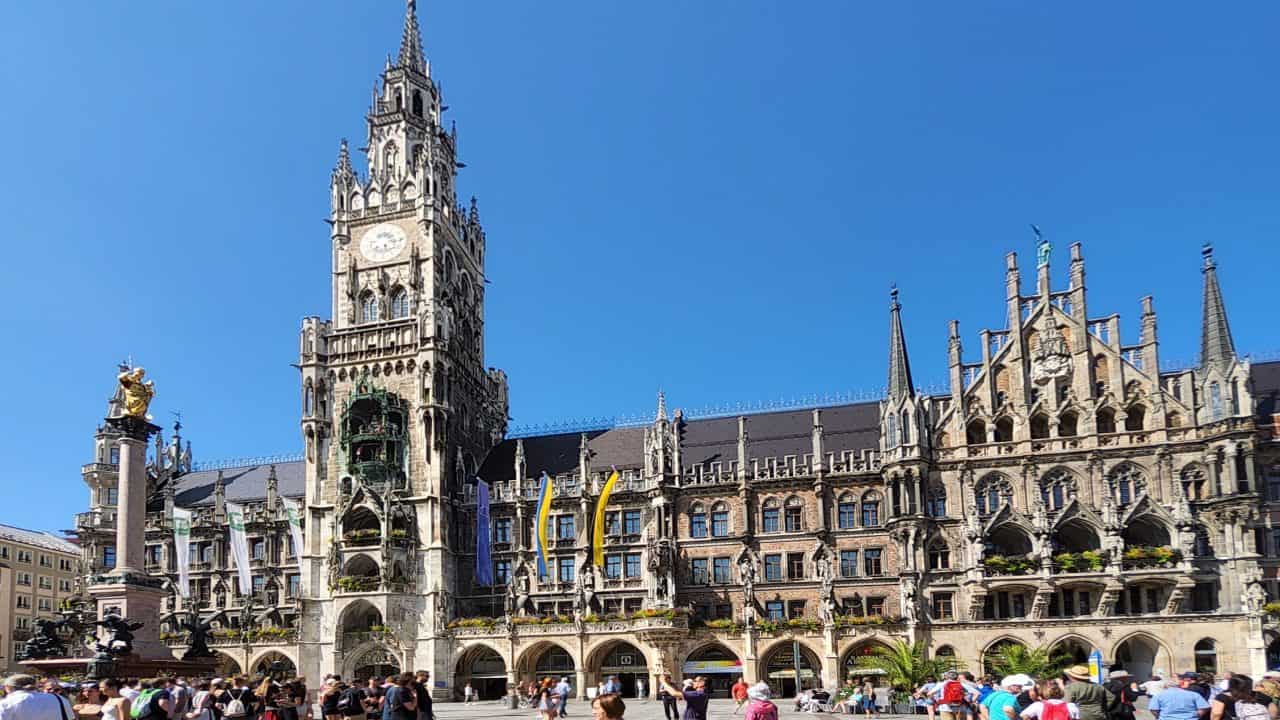
The two main buildings in the two pictures above are the Old and the New Town Hall (Neues Rathaus). You would think that after seven years of touring we would recognize different architectural periods. Wrong. The first, large picture of a great building that looks old is the New Town Hall which is less than 150 years old. It has 400 rooms and covers an area of more than 9,000 square metres. The white building is the Old Town Hall. It was built in the 1470s and was replaced when it became too small to host the local government. It is now a toy museum that Mike and I didn’t have time to visit. We have seen some really interesting ones in other cities.
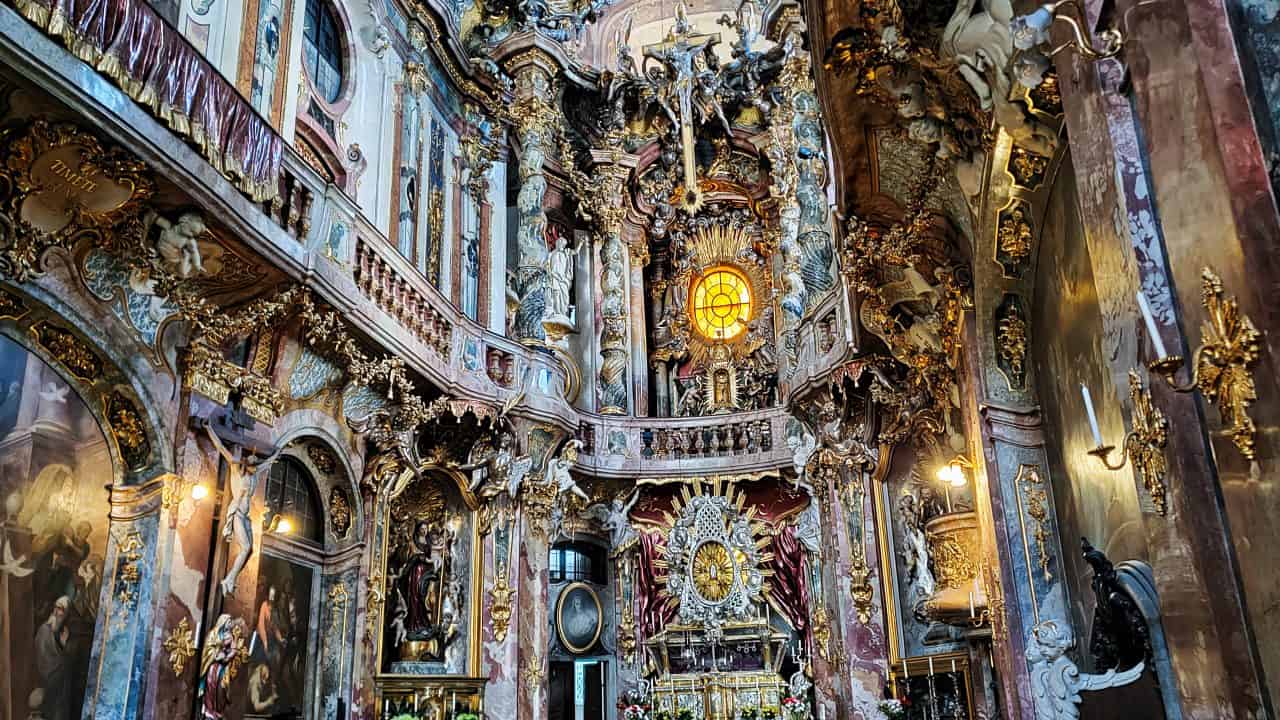
I had to include this picture. Although it is small the Asam Church is renowned for having the most opulent interiors of all the religious sites in Munich. All of these interiors might be very much over-the-top, but they are still kind of interesting to poke your head in and have a look at. The artwork such as the sculptures, paintings and altars in the churches are often superb.
Munich very nicely split its fine art museum into multiple museums, just for me I am sure. They have one museum called the Alte Pinakothek containing the paintings of the Old Masters. It is supposed to be one of the oldest and most important art museums in the world. I knew that Mike wouldn’t be happy walking at a slow pace through this museum with me, so the plan was for him to do some bike riding while I wandered slowly. The weather caused problems with that plan as it was raining. Since the entrance fee was only 5€ Mike decided to come into the museum, go through at his speed and then meet me at the car where he would be sitting and reading. Now if I have to wait for Mike, I make sure to wait somewhere where there is cappuccino or wine, Mike waits in the car.
All the rooms in the museum were numbered and luckily, I accidentally started at the end instead of the beginning. That worked out really well. The rooms for the earlier days displayed a lot of religious works that aren’t my favourites and might have changed my initial impression which was: It was superb! They had multiple rooms filled with Rubens who I really like. Everything from his small paintings to his extremely large ones crossing his different stages. The museum wasn’t very busy; which was lovely.
It turns out that they had free audio guides that I didn’t know about until I was part way through. The museum had really good English signage, so I didn’t go back for the guide. The audio would undoubtedly have delayed me another hour or more which I couldn’t do to Mike. If we ever get back to Munich again, I might return to the museum and get the guide.
For those who might visit in the future, the museum had over 700 paintings that included works by Raphael, Leonardo, Titian, El Greco, Rubens, Rembrandt, and their contemporaries. I remember seeing quite a few Rembrandts and Titians, but I only saw one Da Vinci. It was a great collection.
They had added in an extra section called “From Goya to Manet” where they were displaying pictures from their more modern art museum. I remember seeing three or four Van Gogh’s, some Rodin sculptures, Manet’s and more in this section which I went through quite quickly. Many of the pictures here wouldn’t be high on my list and I figured that Mike had been waiting long enough.
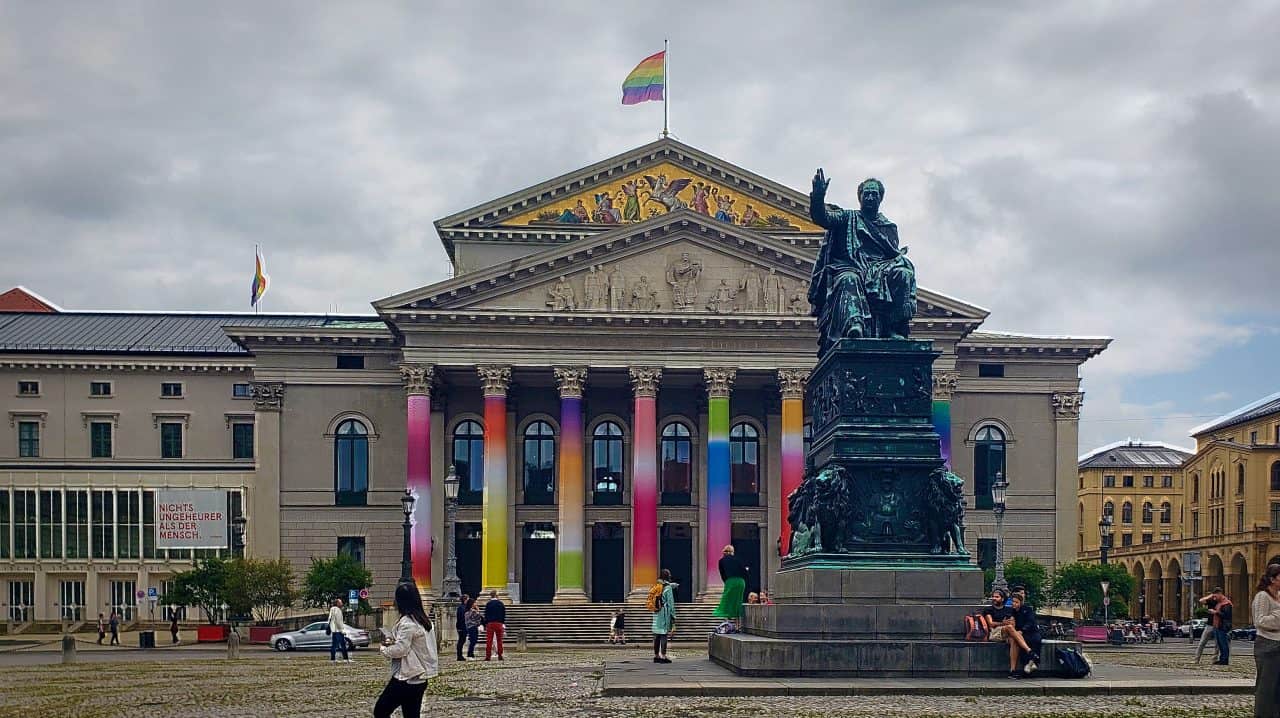
This is Munich’s Opera House. It is home to the Bavarian State Opera, Orchestra and theatre and seats 21,000 people.
On our last day driving into Munich, we decided to do something different. We visited the Deutsches Museum which is Europe’s, and some say the world’s, largest science and technology museum. The museum is 120 years old and undergoing major renovations. Half of it has already been renovated and they currently have the other half closed down for 6 years of renovations. With only one half open, there is still plenty to see.
There was an interesting display on cryptography and some old Enigma machines that Mike and I had read about and seen on TV. The information boards talked about the fact that England and the Allied forces concentrated their code-breaking services in Bletchley Park, which we knew. The German forces had more dispersed individual code-breaking places which were less effective than the single centre with its easier and faster internal communications.
They had a great aviation area even though a large portion of it is in the section under construction. There was a Cessna 172 cockpit on display which brought back some good memories for Mike and I.
We were disappointed to have run out of time before seeing the robotics section in the museum which is supposed to be excellent. In addition to modern day robotics, they apparently had the “Preaching Monk” on display. This is a figure that moved its feet, arms, head, mouth and eyes and rolled on wheels. Everything still works even though the mechanical apparatus is 500 years old! It is one of the oldest automatons in the world.
What a difference touring a major city like Munich compared with our days cycling through the rural countryside.
We visited Munich from our campground on Germany’s Romantic Road which was almost an hour away. The approx. 400 km Romantic Road is very touristy but there are some lovely small towns and, of course, there are the many castles along the route. We won’t tour the entire length, but we will stay at couple of campgrounds along the way. I will tell you more about it in my next posting.
To finish with a bit of fun: here are people jumping into the Isar River from a park in the centre of Munich. The river is extremely fast moving at this point and people float down the river very quickly, faster than when we saw this in Basel. Again, I wonder how they get back home.
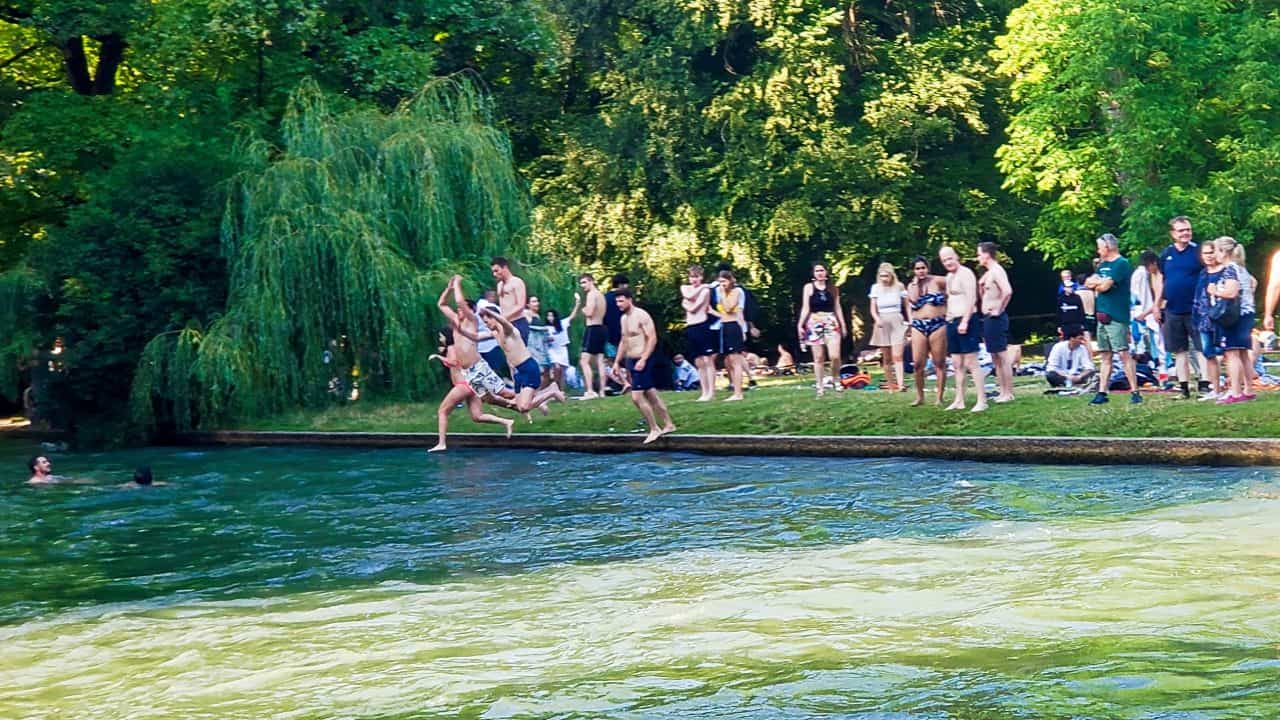

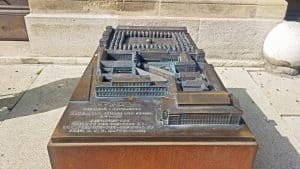
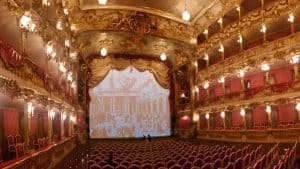
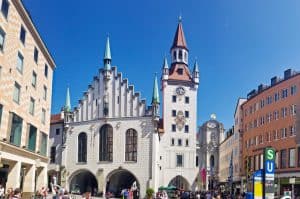
Leave a Reply